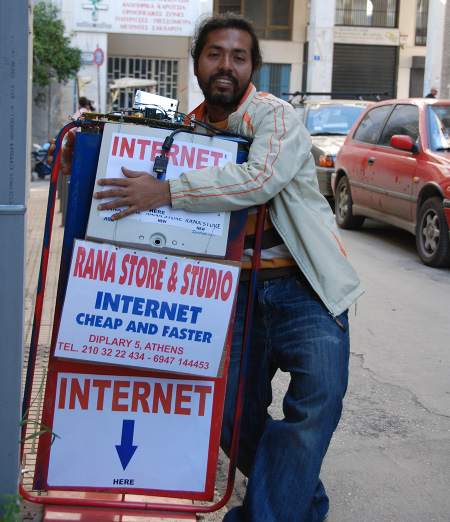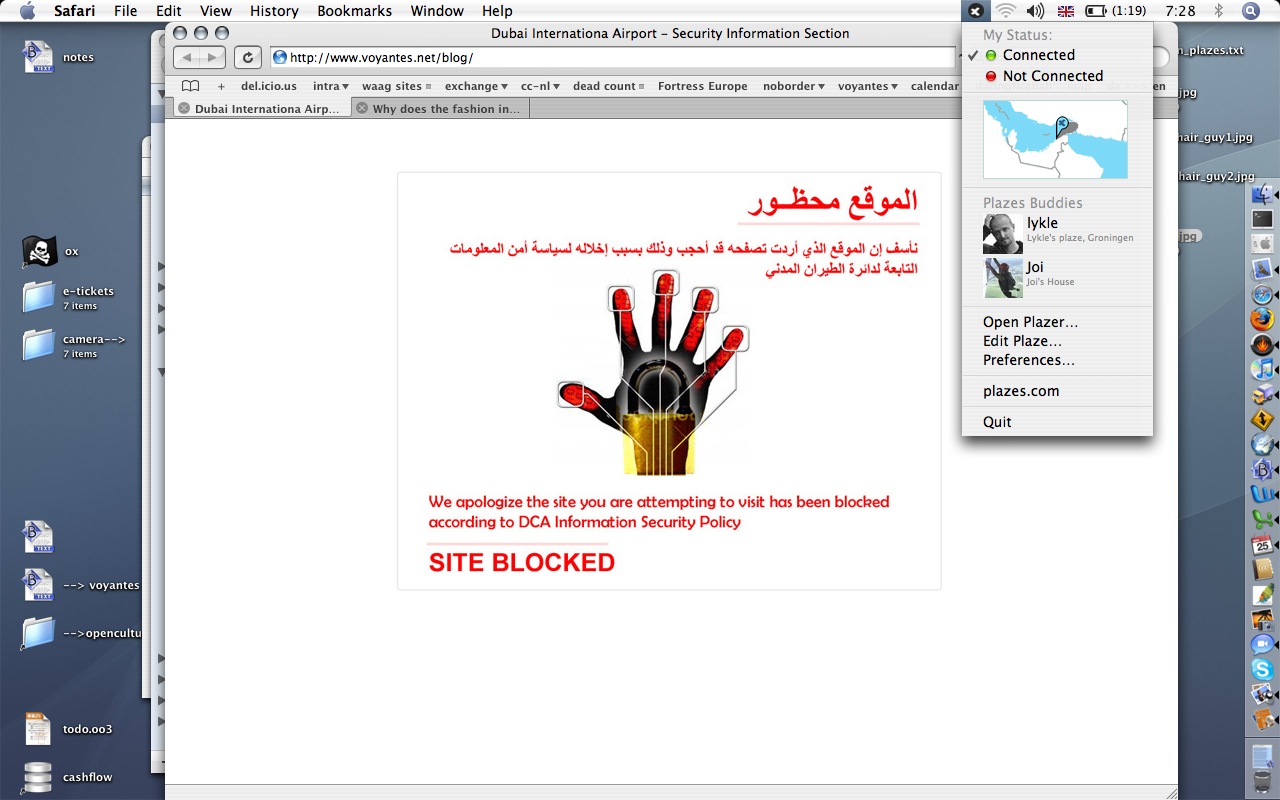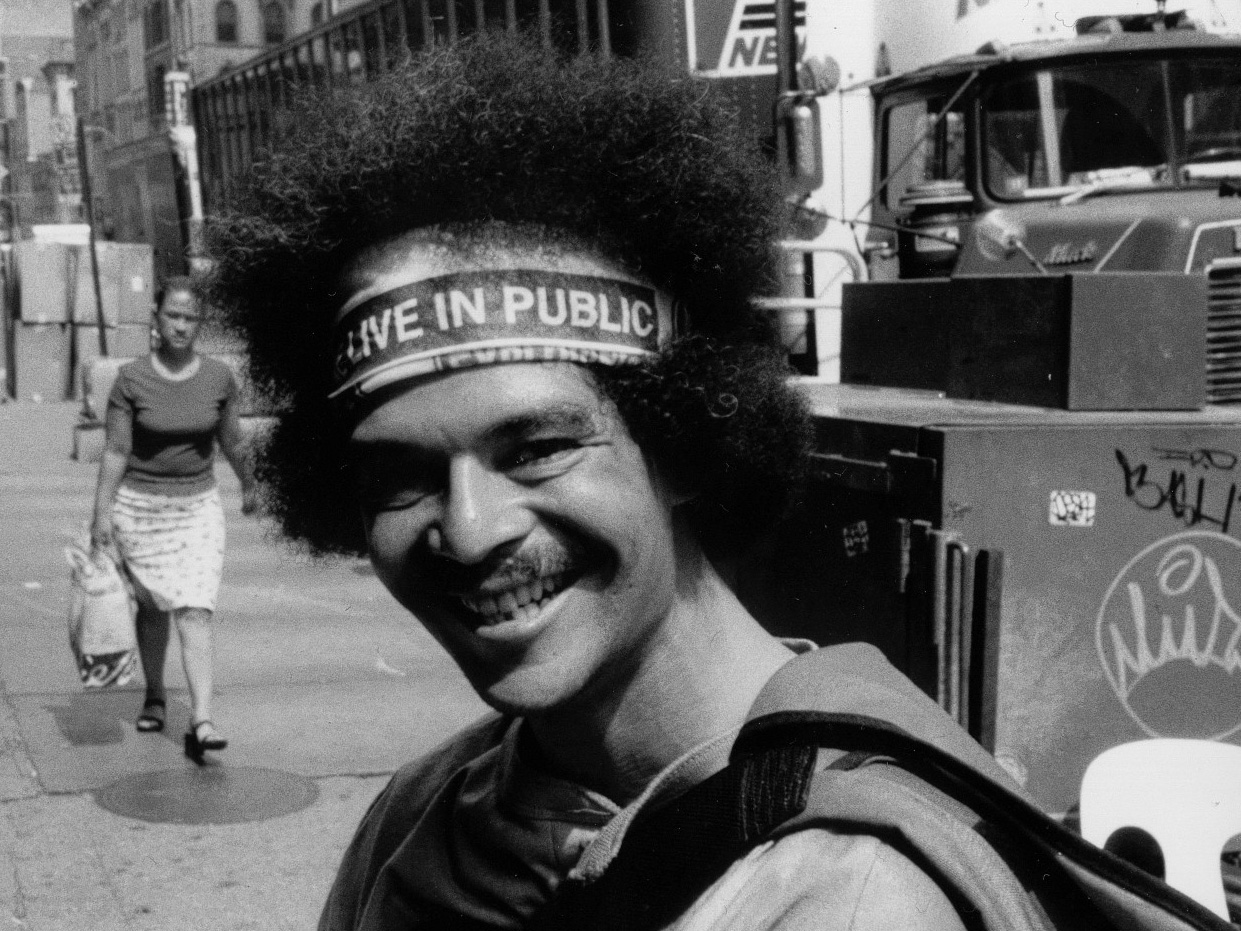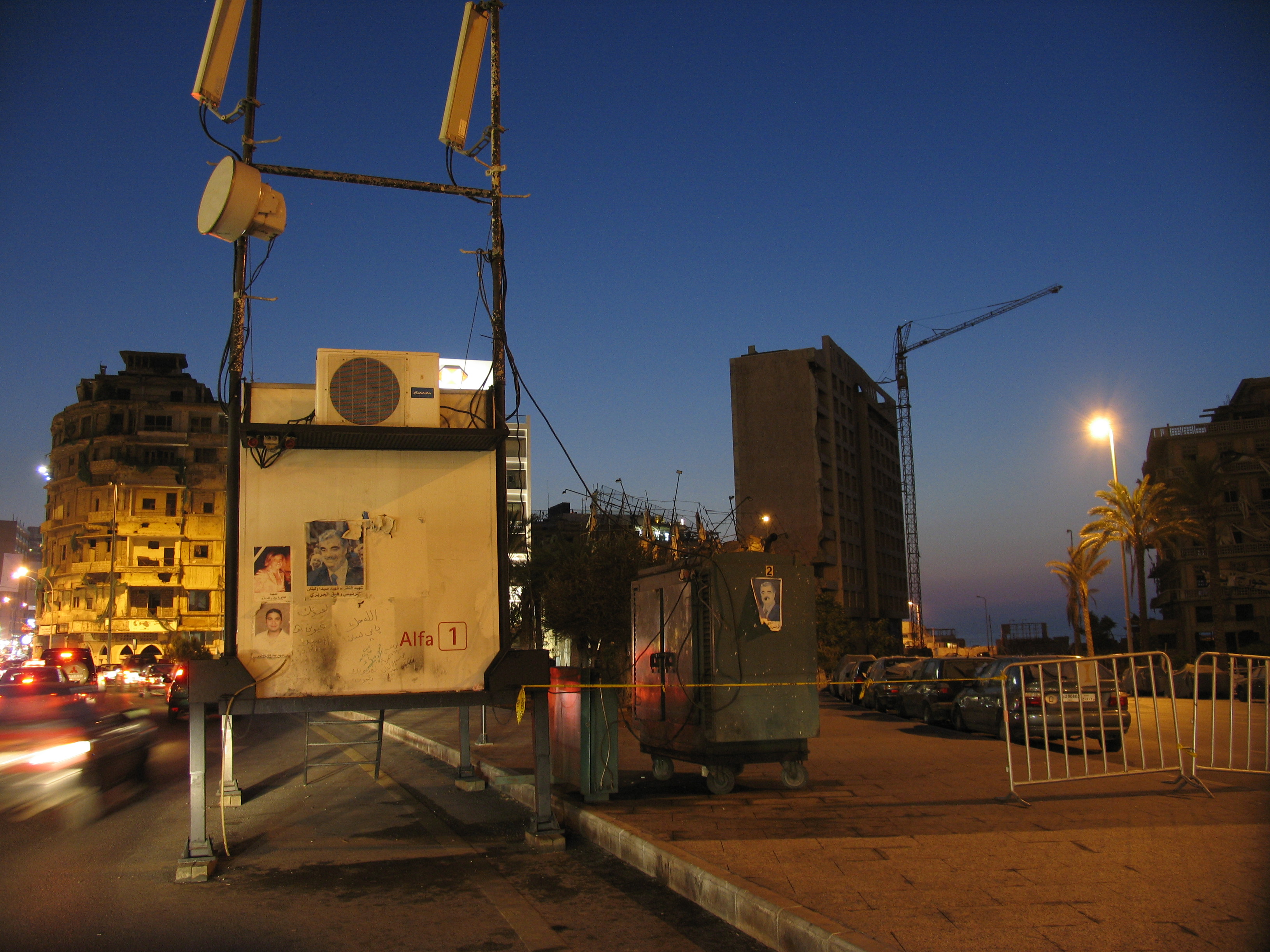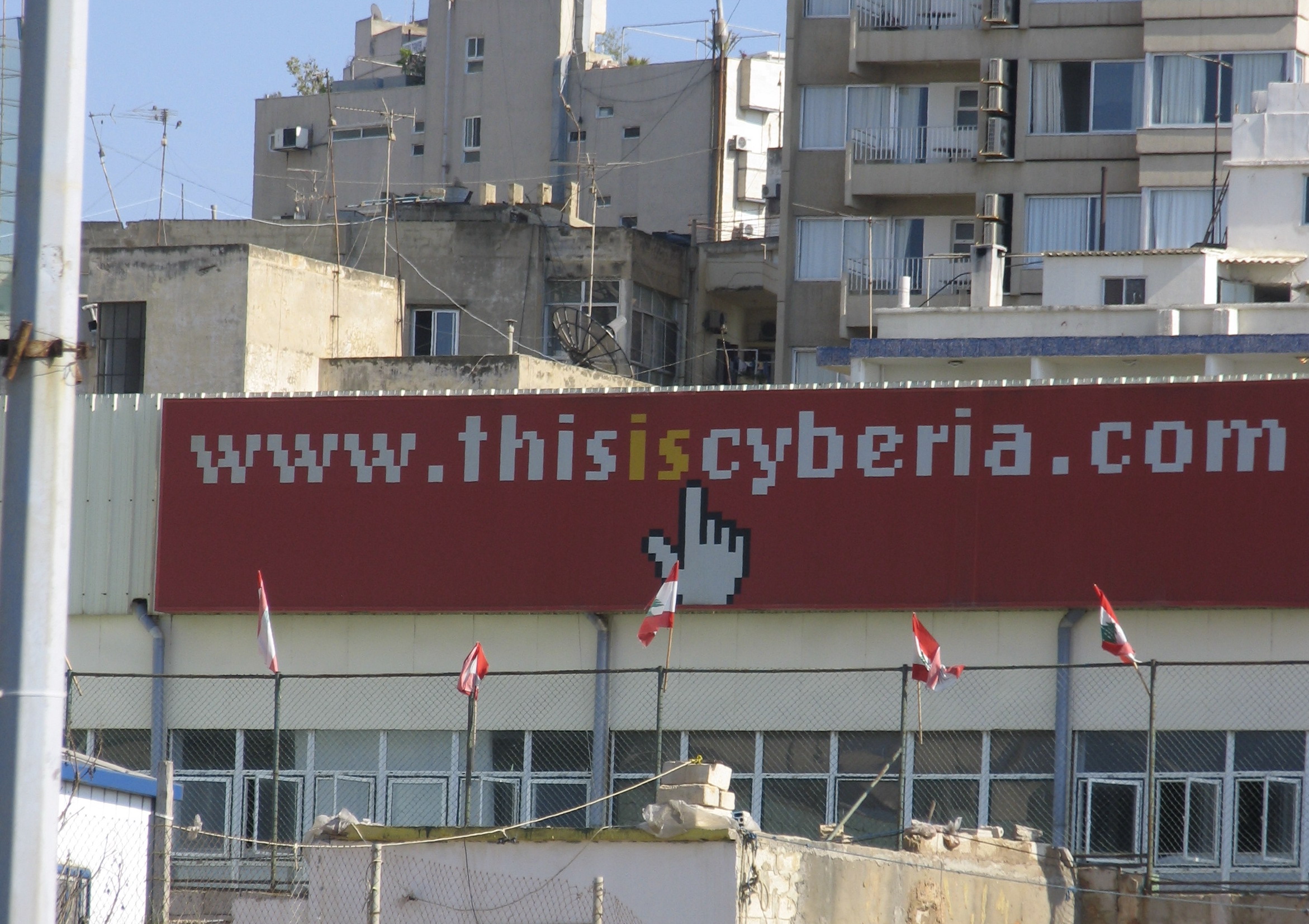Internet here (fast and cheaper)
Came across this installation in front of a small internet cafe/phone shop in Psiri in the center of Athens yesterday:

When i took pictures of it a guy the indian shopkeeper of a mini market across the street came out of his shop and asked me why i was taking pictures of this ‘ugly piece of crap’. Before i could even answer him the owner of the internet cafe came out and responded to him that this was ‘creativity’ not crap, to which i agreed. During the resulting conversation with Rana (the owner) which for some reason centered on the fact that he liked Amsterdam a lot (no not because of the legal dope or any of the usual reasons people have for liking Amsterdam, but because he had perceived Amsterdam as a place without the racism he encounters in Athens, which given the xenophobic tendencies in Holland in the last couple of years i found quite remarkable) he mentioned that he was a Bengali from Kolkatta. This sparked another round of insults from the mini market shop keeper, who insisted that Rana was in fact not a Bengali but from Bangladesh adding extra flavor to the earlier complaint about racism in Greece.
